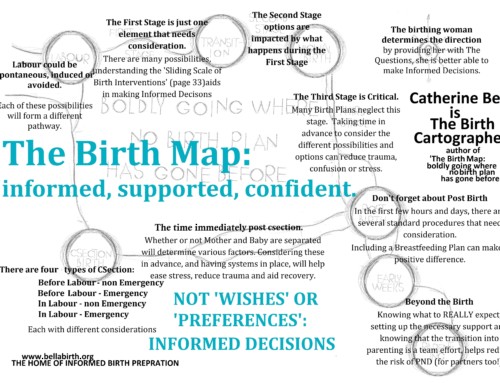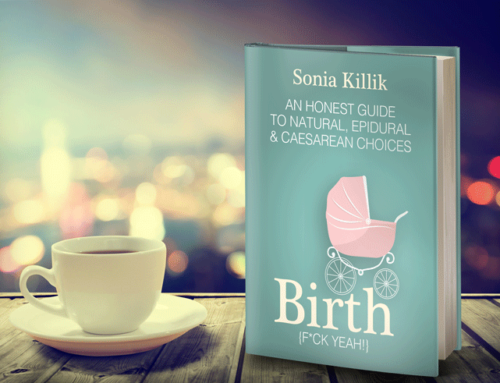By Tracy G. Cassels
I’m continuously amazed at how biased the popular media has become when it comes to parenting and infancy. Given how the media blasts you with information on it being good to CIO or put your infant in a room alone, or how formula is just as good as breastmilk, you’d think there was no research to the contrary. But there is. It just doesn’t seem to fit with whatever agenda is being pushed and so it doesn’t get covered. Herein I’d like to talk about a piece from 2008 that looked at elective c-sections and later maternal responsiveness (linked here). Not because I want to cause a stink for those who had a c-section, but because we need to understand the effects of our modern birthing practices on those intimately involved – the mother and the infant.
The Study
The study, by Dr. James Swain at Yale’s Child Study Center and colleagues, recruited 12 mothers – 6 who had had a vaginal delivery and 6 who had an elective c-section and stated in the study was that they were planned for convenience. No one reported any birth complications, all were breastfeeding, and all were middle to upper-class. These parents were asked to record their newborn’s cries of mild discomfort (not pain and not hungry) and bring those in when the mothers came in for an fMRI at 2-4 weeks postpartum. During the fMRI, mothers were asked to listen to 30 blocks of stimuli: their own baby’s cry (with background noise removed), another baby’s cry, and their own baby’s cry muted down and controlled to the same intensity across parents. These stimuli were given randomly and mother’s neurological response was measured.
All mothers self-reported the same emotional response to their own baby’s cry and the other baby’s cry, and both of these were reported as being more emotional than the control sound. However, neurological activity was different between the two groups. Specifically, women who birthed vaginally showed greater activation to their own child’s cries in brain areas associated with emotional response, theory of mind, decision-making, arousal and reward, and the regulation of thoughts and behaviours. The authors conclude that there seems to be “parenting” regions in the brain that are focused on care for our infants, but also in dealing with post-partum depression. Notably, the areas activated by own infant cries overlapped with areas activated during depression and recovery from depression, and this activation was higher in moms with vaginal deliveries. At the theoretical level, the authors argue it is “tempting” to look at the underlying role of oxytocin, which is known to be stimulated during vaginal, but not caesarean, deliveries.
What Does This Mean?
This is but one study, but an important one. First, let’s address what some people might complain about – the small sample size. While no one would argue this is tiny, it’s actually not that small for fMRI research. The results may be unstable relative to a larger population, but to achieve significance in such a small sample, the differences have to be huge. This allows for researchers to say that despite the small sample, the results should hold (though they may not be as strong in a larger sample). But there’s one other confound that I was surprised the authors did not consider – namely, that the c-section group was a group of women who opted for a c-section for “convenience”. Why might this be a problem? Well, the crux of the findings is that these women are less responsive, at least neurologically, to their infants, but what if they were like this prior to birth? The selection of a c-section for convenience carries with it certain assumptions about how responsive the mother may be ahead of time. Now, I have to be careful because we have no idea if convenience was defined by the doctor, the mother, the family, etc. And perhaps that’s why the authors did not suggest it. To counter this, if the theory is that the release of oxytocin that occurs during a vaginal birth is the mechanism behind these findings, the situation surrounding the c-section would not matter. However, I would not be surprised to see different results for women who had an emergency c-section or even who planned one due to a breech birth or complications.
With those caveats out there, what should we take home? I think the biggest take home message here is that we are adding to the growing list of evidence that our modern birth practices are interfering with normal mother-infant relationships. And when some hospitals boast an 80% c-section rate, we have to wonder how this impacts families at a larger level. In a society where families have little support, acts that increase the likelihood that a mother will, for example, suffer post-partum depression or be less responsive to her child also increases the chances of longer-term and more costly problems in society.
C-sections can save lives, there is no doubt about it, but not in the way they are used today. In our larger lack of respect for birth and women, we have pushed for more interventions and more surgeries, and have removed ourselves from the birthing process more and more. Much to the detriment of mothers and babies everywhere. Many women are completely unaware of the risks they take when they choose a c-section. Many are unaware that just because a caesarean birth went well, that does not mean you are starting at the same point as a mother who birthed vaginally. And most unfortunate, when we ignore the effects of medicalized birth, those who need these interventions to save them or their child also get the short end of the stick because we are unprepared and uneducated about how to help them after. Our societal ignorance means many women still fight to even touch their newborns in the NICU, despite research showing that kangaroo care is best for most infants. It means women who have a c-section are at higher risk for post-partum depression which carries with it myriad negative outcomes for the entire family and yet we don’t have the resources to counter this.
We must make sure that parents are aware of the risks and benefits when choosing how to birth. And parents should have that choice, but it needs to be an educated one. I really don’t believe we can say that the vast majority of families are given the type of information they need to make a truly informed choice and that is what I believe the take-home message really is.






Wow, thanks for digesting this. It's an area of science that interests me but I don't always catch the journal articles first hand.
I'm glad this brought up the first question that came to my mind, whether women who chose c/s due to convenience already had certain traits that would influence the results. It would be interesting to see the results with a 3rd group of mothers who wanted vaginal birth but wound up having surgery anyway.
I’m a veterinarian and this is certainly true in farm animals – in sheep and cattle which require a c-section many vets will manually dilate the vagina to stimulate appropriate mothering behaviour which is not elicited without a vaginal birth. I know we like to think that our emotions and motivations are more complex, but I would expect good mothering to be important to all mammals and I wouldn’t be surprised if there were similar mechanisms involved across species.